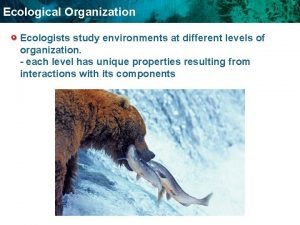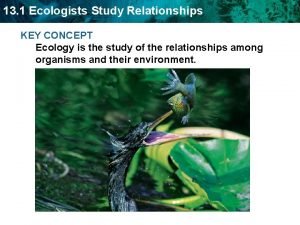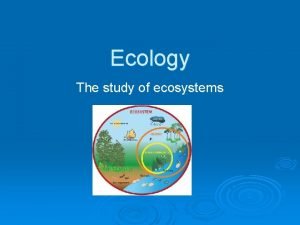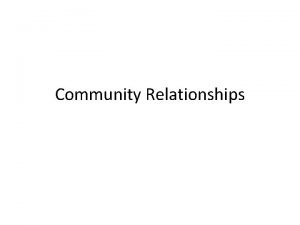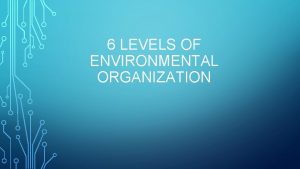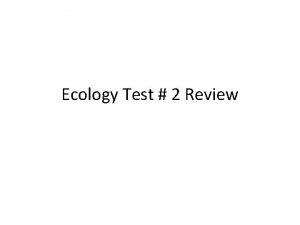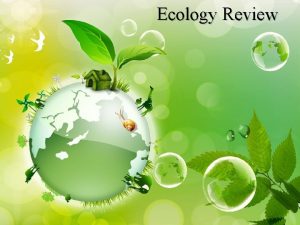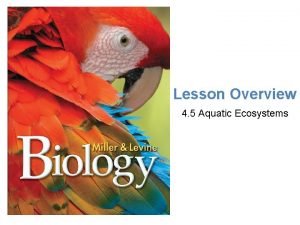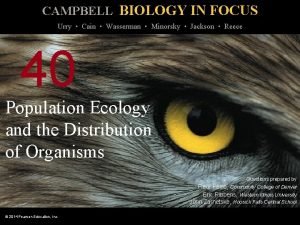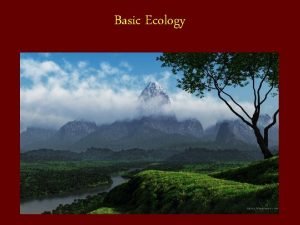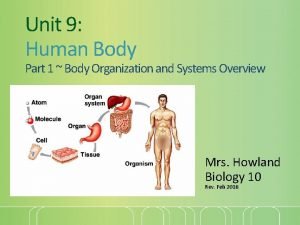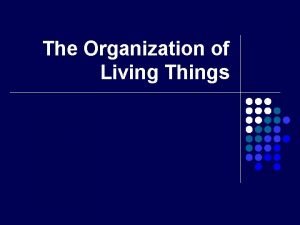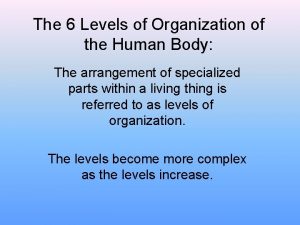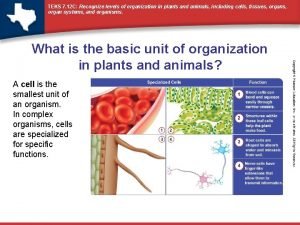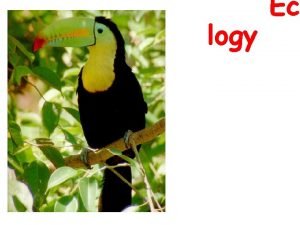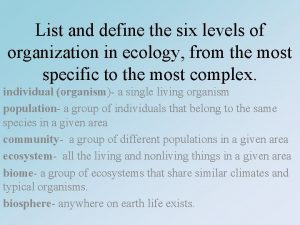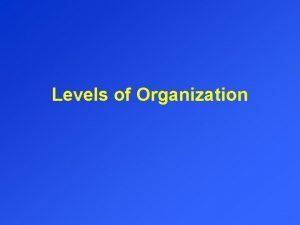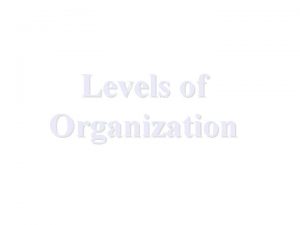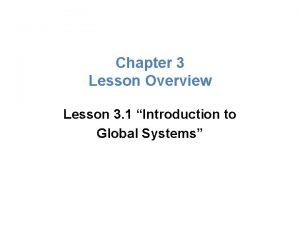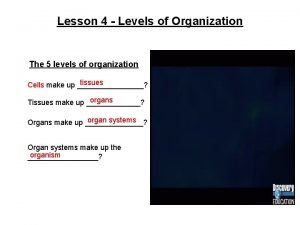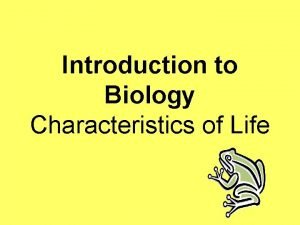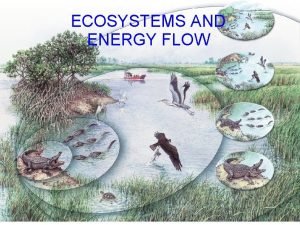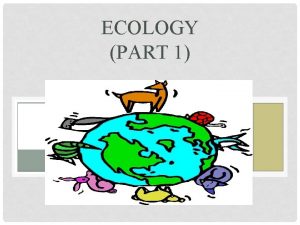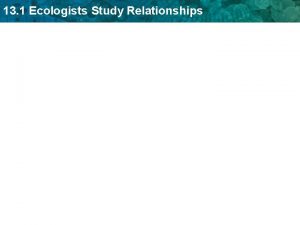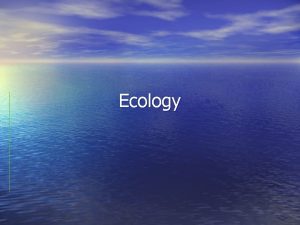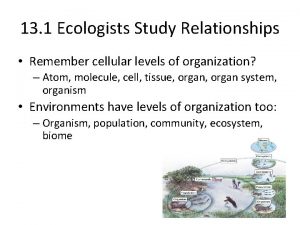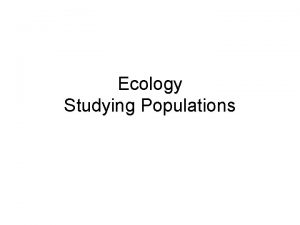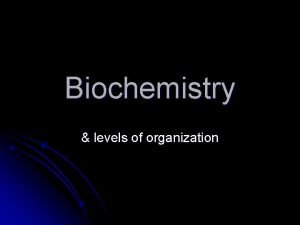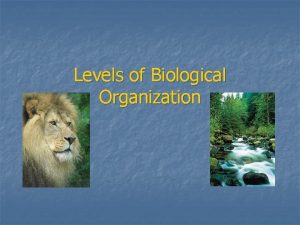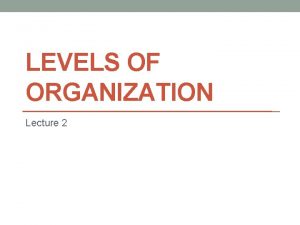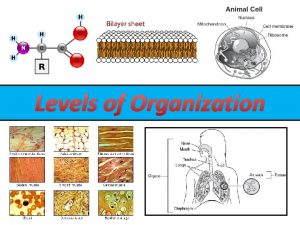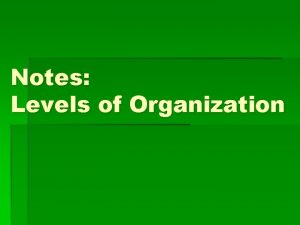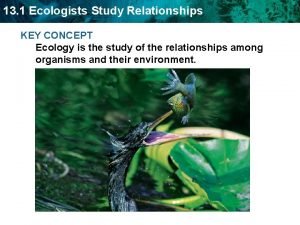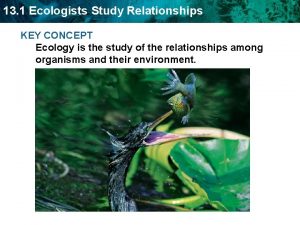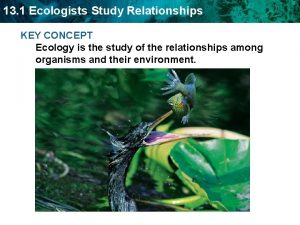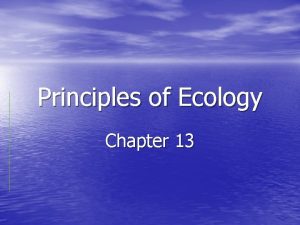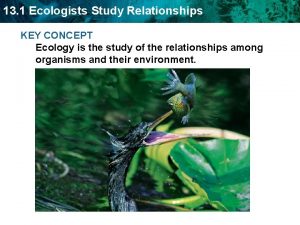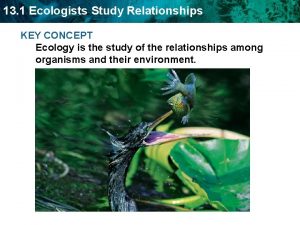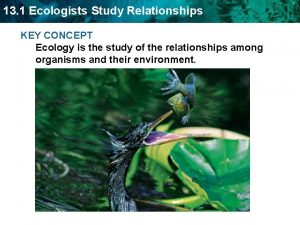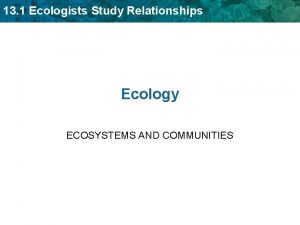Ecology Levels of Organization in Ecology Ecologists study

























- Slides: 25

Ecology

Levels of Organization in Ecology • Ecologists study individual organisms, but this only provides part of the story of its life cycle. • An individual organism interacts with others of its species; it is also dependant on other organisms for food, shelter, reproduction and protection.

If an animal survives for a long time in a particular community it must be able to reproduce there. A large number of biotic and abiotic factors influence how an animal or plant species may interact and change with time.

What is ecology? • The word ecology comes from the Greek for “house”. • Why do you think this is appropriate?

Levels of Organization

Levels of Organization in Ecology cont. • Biome – a large region characterized by a specific climate and certain plants and animals • Biosphere – the portion of Earth that supports life • The biosphere extends from high in the atmosphere to the bottom of the ocean.

Biosphere • The volume of the earth’s surface where organisms can be found. • It extends from the depths of the ocean (11 km below sea level) to at least the highest plant communities (6. 2 km)

Biome • The biosphere is made up of several types of biome. • These are classified due to their major vegetation types, for example TUNDRA or TROPICAL RAINFOREST.

Ecosystem • An Ecosystem is a part of a biome. • Biomes themselves are far too large to study so ecology work tends to be based around a particular ecosystem. • Each ecosystem has a characteristic set of plants, animals and microbes. • The organisms in an ecosystem form a selfsufficient unit in balance with their environment.

Community • This is a group of species that occurs at the same place at the same time. • The word is often used to refer to organisms of a particular kind, such as the plant community on a lawn.

Population • Ecosystems and communities contain populations of species. • A population is made up of all the members of a species living together in the same place at the same time. • An example would be all the ash trees in a wood.

Individual • Finally each population is made up of many individuals. • The genetic and physiological adaptations of an individual organism to its environment is an important aspect of ecology.

Organisms in Ecosystems • Habitat – the place where an organism lives out its life • Niche – the role and position a species has in its environment – how it meets its needs for food and shelter, how it survives and how it reproduces.

Niche • Several species may share a habitat, but the food, shelter, and other resources of that habitat are used in different ways. • These differences lead to reduced competition. • It is an advantage for a species to occupy a niche different from those of other species.

Food Web

Food Webs • Divided into levels known as trophic levels (feeding levels) • Composed of: – Producers • Make their own food (autotrophs) – Consumers • Must consume food (heterotroph) – Decomposers • Breaks down waste (dentritivore)

Producers

Consumers

Decomposers

Energy Flow FOOD CHAIN heterotroph Secondary consumer Photosynthesis heterotroph Primary consumer Autotroph producer


FOOD WEB

Energy Pyramid

Energy Exchange • Energy is not transmitted evenly from our food – Usually only 10% of the lower trophic level makes it to the next level (most is used by the organism)

Complex Food Webs • Relationships between organisms are greatly intertwined • Many organisms are dependent on others for survival
 Ecologists study relationships
Ecologists study relationships What do ecologists study
What do ecologists study Ecosystem level of organization
Ecosystem level of organization 5 levels of organization ecology
5 levels of organization ecology 6 levels of organization in ecology
6 levels of organization in ecology What do ecologists do
What do ecologists do What do ecologists do
What do ecologists do How do ecologists usually classify marine ecosystems?
How do ecologists usually classify marine ecosystems? Population ecologists are primarily interested in
Population ecologists are primarily interested in Four levels of ecology
Four levels of ecology Level 3 question
Level 3 question Cells human body
Cells human body Levels of organization atom
Levels of organization atom 6 levels of organization
6 levels of organization Levels of organization
Levels of organization Biological organization levels
Biological organization levels Levels of organization from smallest to largest
Levels of organization from smallest to largest In what ways are herbivores and carnivores alike?
In what ways are herbivores and carnivores alike? What is the smallest part of a plant
What is the smallest part of a plant Levels of organization in an ecosystem
Levels of organization in an ecosystem Chapter 3 lesson 1 introduction to global systems
Chapter 3 lesson 1 introduction to global systems 5 levels of organization
5 levels of organization Levels of biological organization from smallest to largest
Levels of biological organization from smallest to largest Community in desert
Community in desert Level of ecosystem
Level of ecosystem Organisms ecology
Organisms ecology
